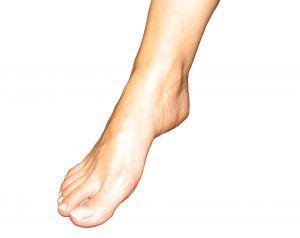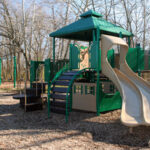Many people, when thinking about ailments and conditions, do not usually consider the feet. However, as we all know, pain or discomfort of the feet is no picnic. In addition to the typical anomalies that tend to affect our tootsies, one is often overlooked. “Flat foot” is not just a term used to insult our foes. It is actually a condition of the foot which is due to fallen arches. But there are some things about this condition which you may not be aware of:
WHAT IS IT?
If your shoes have excessive wear towards the inside, or if you can stand with ALL parts of your foot touching the floor, then it would be wise to have your feet examined for this condition. The official medical name for fallen arches is pes planus. There are two basic kinds of flatfoot. One kind, rigid flatfoot, is diagnosed when the natural arch of the foot disappears when standing, or when the foot is raised. The other, flexible flatfoot occurs when the arch disappears only when standing. Though “flexible flatfoot” is common among small children and infants (because infants are not born with a natural arch), “rigid flatfoot” is the condition which causes the most problems.
Flatfoot is generally an inherited state, but can also be acquired later in life. The latter condition typically occurs in people who once had a natural arch in the foot. In this case, usually an injury which causes a dislocation of the talus bone is the catalyst for the fallen arch.
WHAT DOES IT FEEL LIKE?
Ordinarily, this condition is painful. But people with flatfoot, usually complain about tired, achy feet -primarily after long bouts of standing or walking. This is because a person’s body weight is not distributed in same manner as a person who has a natural arch. On occasion, a person with fallen arches may have feet that feel stiff. Pain can occur in the ankles, primarily after walking up a flight of stairs, or on uneven ground.
For women, wearing high heels is particularly challenging when they have flatfoot. In this case, wearing heels too high can cause problems with the Achilles tendon. Furthermore, it can even affect the motion of the ankle. Many women who have flatfoot find that wearing shoes with a wedge heel are more comfortable than ordinary high heeled shoes. The wedge heel offers a level of firm support that spindlier heels do not.
TREATMENTS
There are also special pads which can be placed into the shoe, which provide somewhat of an artificial arch. These pads can be found in many drugstores. Or you can have a specialist to prescribe orthotics upon further evaluation.
In extreme cases of flatfoot, surgery may be necessary. Doctors resect fused bone, or completely fuse bones of the foot together until the desired effect is achieved. The surgery can improve pain; but surgery is not always the optimum choice-as surgical complications can bring about infection. In addition to that, some fused bones may not heal properly, actually making the condition worse. While there are a few people who opt to go under the knife, many people prefer to wear the shoe inserts or even ankle braces.
Another approach to treating flatfoot is with the use of Prolotherapy. This strange treatment involves injecting a substance into the foot ligaments which actually causes a localized inflammation. The resulting inflammation activates the body’s natural healing mechanisms, creating new collagen. As the collagen matures, it shrinks-and the ligament that was injected becomes stronger-thus reducing pain and tendon weakness.
Having “flat” feet is definitely not a death sentence. And while they may seem a bit less attractive and less comfortable than feet with normal arches, the condition can certainly be dealt with. Surgery is typically a last resort for many different ailments. Flatfoot, being primarily an inherited condition, is easily remedied by simple, gentle caring of the feet. Those with flatfoot are first advised to seek an evaluation from a healthcare provider, to determine the severity of the condition. The correct shoes and proper guidance during physical activities can mean a world of difference.




